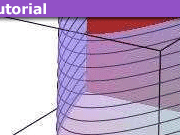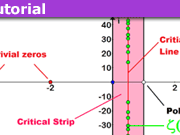What is Integration By Parts? A 5 Minute Introduction
Table of Contents
Definition/Summary
In this article, we shall learn a method for integrating the product of two functions. This method is derived from the ‘product rule’ for differentiation, but can only be applied to integrate products of certain types.
Equations
[tex]\int u dv=uv – \int v du[/tex]
where u and v are functions of one variable; x, say.
Extended explanation
As, you can see in the equation, it contains two variable, namely ‘u’ and ‘v’. These variables are actually the representation of two functions and thus, the above rule can also be stated as:
[tex]\int f(x) \ g(x) \ dx=~ f(x)\int g(x) \ dx \ -~\int \left[ \ f'(x) \int g(x) \ dx \ \right] \ dx [/tex]
The most important step of initiating such problems would be the determination of u and v from the given function. This can be done by using the following order:
L- Logarithmic
I- Inverse trigonometric
A- Algebraic
T- Trigonometric
E- Exponential
(Or can be remembered as ‘LIATE”)
Thus, out of the two given function, whichever comes first in the above given list can considered as ‘u’, and hence the other to be ‘v’.
Implementation of the rule given above can be clearly understood by solving an example. Consider,
[tex] I \equiv \int x cos(x) dx[/tex]
In the above stated example, ‘x’ is an algebraic expression whereas ‘cos(x)’ is a trigonometric expression. Thus, ‘x’ is considered as ‘u’ and ‘cos(x)’ is considered as ‘v’. Hence, applying the above given rule, that is,
[tex]\int uv dx=~ u\int v dx-~\frac{du}{dx} \int vdx[/tex]
so that
[tex]I= x\int cos(x) dx – \int\left[\frac{d}{dx}x\int cos(x) dx\right] dx[/tex]
[tex]= x \ sin(x) – \int sin(x) \ 1 \ dx +c_1 [/tex]
Because,
[tex]\int cos(x) dx= sin(x)~\text{and}~ \frac{d}{dx}x=~1[/tex]
And finally,
[tex]I = x \ sin(x) + cos(x) + c[/tex]
because
[tex]\int sin(x) dx= -cos(x)[/tex]
Extra
Integration by parts is the product or Leibniz rule of differentiation: ##\int (fg)’ – \int f\,’g = int fg’##.
Cp.: https://www.physicsforums.com/threads/what-is-the-product-rule.762916/#post-6161880
Advanced
Multidimensional version of the formula of integration by parts is very frequently used in PDE, hydrodynamics and in many other topics. So it would be nice to have its invariant version. Perhaps the things I am going to write are contained in some big book but I have never seen it anywhere and possibly it these informal notes would be interesting for somebody else.
Let ##D\subset \mathbb{R}^m## stand for open domain such that ##\partial D## is a smooth closed manifold. Assume that in a neighbourhood of ##D## there is a smooth vector field ##v(x)##. Assume also that we are given with differential form ##\omega=\rho(x)dx^1\wedge\ldots\wedge dx^m.##
Theorem. Assume that the form ##\omega## is an invariant form for ##v## i.e. ##L_v\omega=0##, here ##L_v## is the Lie derivative. Then for any smooth functions ##f,g:\overline D\to \mathbb{R}## it follows that
$$\int_Df(L_vg)\omega=\int_{\partial D} fgi_v\omega-\int_Dg(L_vf)\omega.$$ Here ##i_v## is the interior derivative.
Proof. It is easy to see that ##L_v(fg\omega)=(L_vf)g\omega+f(L_vg)\omega.## On the other hand ##L_v(fg\omega)=d(fgi_v\omega)+i_vd(fg\omega).## Gathering these formulas we have
$$d(fgi_v\omega)+i_vd(fg\omega)=(L_vf)g\omega+f(L_vg)\omega.$$ It remains to apply ##\int_D## to both sides of the last equality and note that
$$\int_Dd(fgi_v\omega)=\int_{\partial D}fgi_v\omega,\quad d(fg\omega)=0.$$ QED
1) one can easily restore the detailed conditions of smoothness for all the objects.
2) The arugment remain valid if we replace ##\mathbb{R}^m## with an ##m-##dimensional manifold ##M## and consider proper embedding ##D\subset M##.
3) The conditions of smoothness can actually be weakened up to ##f,g\in H^1(D)##. This also needs for some formal details.
4) If ##D## is a closed manifold we get
$$\int_Df(L_vg)\omega=-\int_Dg(L_vf)\omega.$$ Assume that ##\rho>0## a.e.
So that ##L_v## is ##L^2_\omega(D)-## skew-symmetric operator. It suitable to remember about dynamical systems that preserve measure and the Koopman operator. The Koopman operator ##f\mapsto f(g_v^t(x))## is a unitary operator in ##L^2_\omega(D)-##. Actually this operator is ##e^{tL_v}##. This agrees with skew-symmetricy of ##L_v##.
PhD – Interested in differential equations and classical mechanics










Leave a Reply
Want to join the discussion?Feel free to contribute!